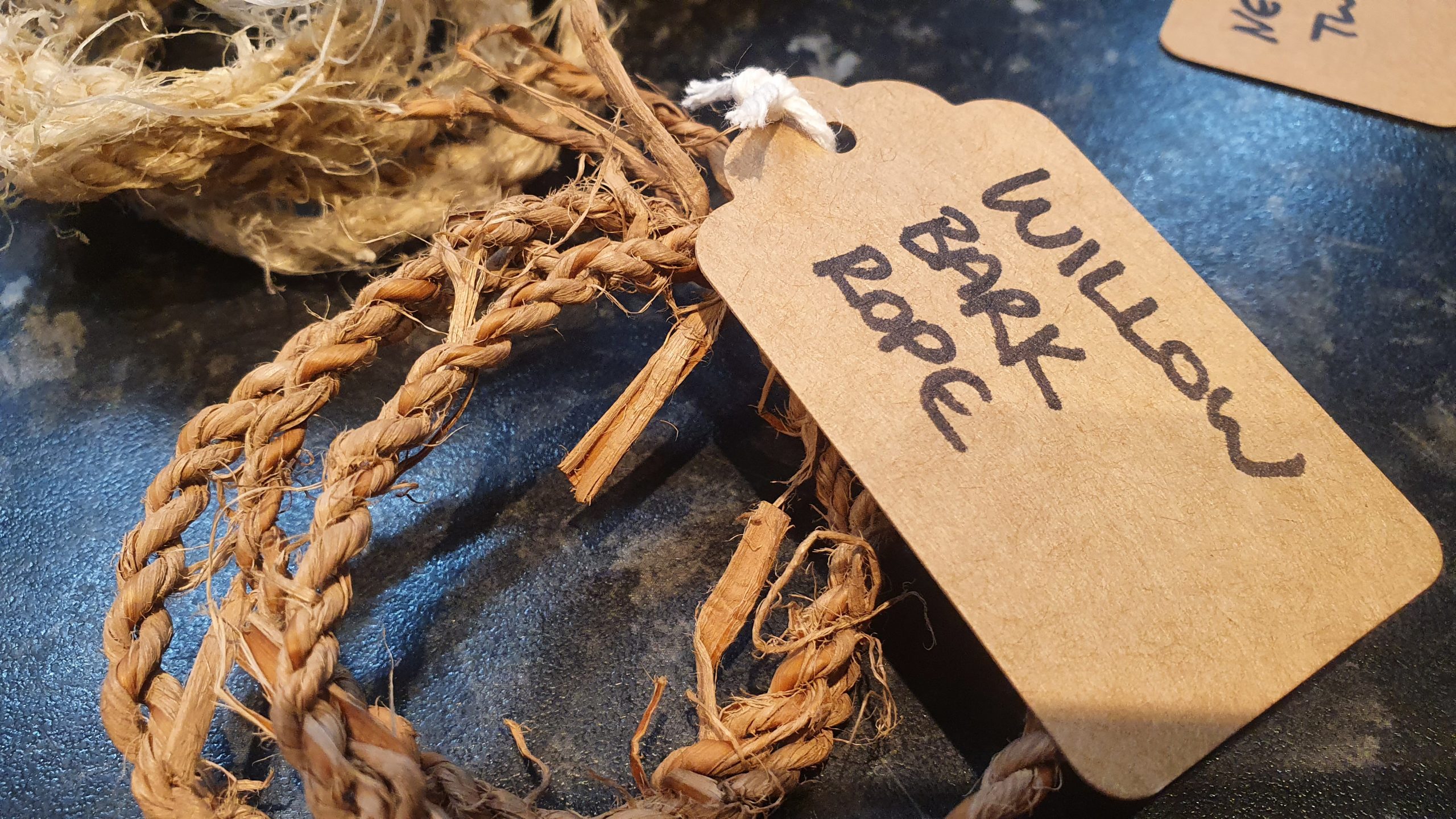The main skill of making natural cordage is the foraging and processing of the strands. There are a bunch of materials, but some of the most widely used include:









Nettle: late summer nettles are stripped of leaves. The woody pith of the stems are crushed, and the green outer fibre of the stems are carefully extricated. They are then left to dry.
Goat Willow: I’ve seen different methods here, but personally I like to harvest branches between one and two inches in diameter, straight with few or no knots. Wands from damaged willow or coppice stools are best. Use the back of the knife to strip the outer bark from the willow, before carefully peeling off the inner bark to preserve it in one piece, or if necessary, a few long straight lengths.
Lime Bast: peel or cut the bark from a lime branch, ideally long straight lengths. Then tie it in a cloth bag and throw it in a river for two months. Take it out, peel out the thin layers of the inner bark, and leave them to dry. Smells delightful.
Animal Tendon: Take the removed hoof from a deer. Bigger is better, and rear is longer than fore. Remove the large, thick tendon, and leave to dry for a day or so. Then smash it up at the thickest end with a rock, and tease out the very thin and abundant white fibres.
Once you have your fibres, you can rehydrate them by soaking them in water. They are now ready for making cordage.
Fold off centre, so that one end is longer than the other. The number of strands will vary from one to maybe ten, depending on the material.
With the weak hand, pinch the fold.
With the strong hand, twist both ends clockwise until they are tight. Do the bottom one; pin it with your bottom two fingers, and do the top one. Hold them both in place. The angle is important for the twist of the rope and its quality.
Twist the fold end anti-clockwise. The rope will form.
Once you’ve got the hang of this, learn to add new strands. Do it before your ends get too small. Lock the new strand/s into your twists.
Keep the rope even in thickness – the thinnest bit is where it will snap.





Leave a Reply